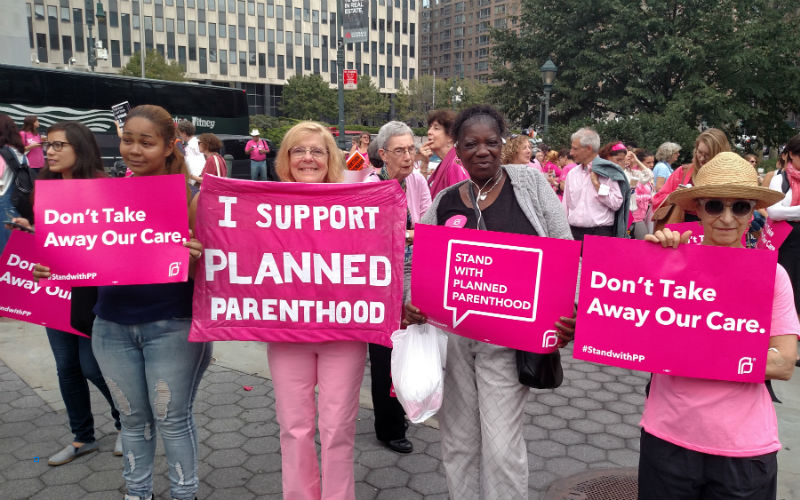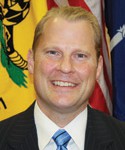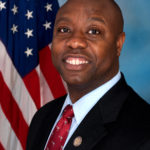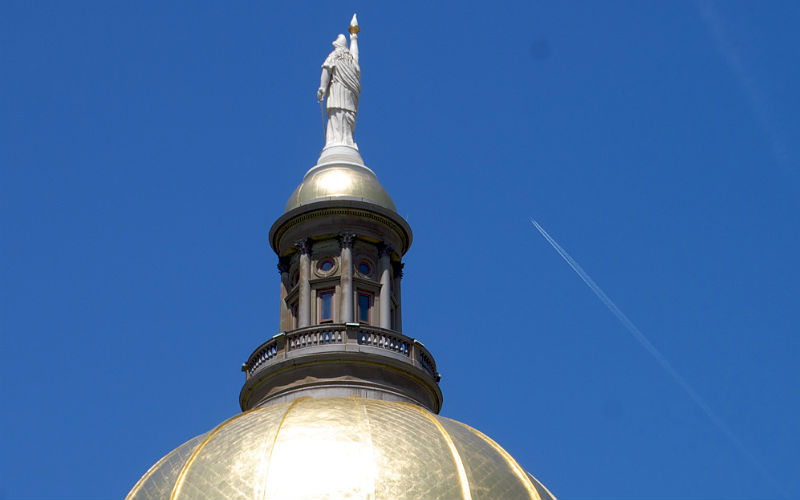INSIDE ISSUE 17.14 | APRIL 6, 2018
NEWS: Plan to ‘defund’ Planned Parenthood could also expand family planning services
BRIEFS: Santee Cooper privatization mulled and more
CALENDAR: Senate returns; budget, hands-free driving
TOP FIVE: Fraud, area code, liquor, armories and tech industry
COMMENTARY, Brack: S.C. friendship touted in new book isn’t all that unlikely
SPOTLIGHT: S.C. Farm Bureau
MY TURN, Smith: We traditionally underfund rural schools, so let’s consolidate them
FEEDBACK: On drilling, climate change and small business
MYSTERY PHOTO: Gold top
S.C. ENCYCLOPEDIA: Mill villages in South Carolina
NEWS: Plan to ‘defund’ Planned Parenthood could also expand family planning services

By Lindsay Street, Statehouse correspondent | A South Carolina agency is seeking to block public money from going toward family planning services at most non-primary care facilities — a move that would strip Medicaid dollars from any abortion-providing clinic in the state. But in justification of that move, the plan also includes expanding family planning services to make them more comprehensive and address chronic health care problems.
“It’s definitely a mixed bag,” said Sue Berkowitz, director of S.C. Appleseed Legal Justice Center, an organization that focuses on legal issues for low-income residents. “Yes, this is a political move for Planned Parenthood but there’s also some things in here that could be really, really helpful to low-income, rural beneficiaries.”

In August, Republican Gov. Henry McMaster signed an executive order that sought to toughen policies on abortion in the state. One of the items in the executive order tasked the S.C. Department of Health and Human Services (DHHS) to stop abortion clinics from receiving Medicaid funds for other services offered. But to do so, the state has to get federal approval via a waiver, which is the only way excluding providers would happen, according to DHHS
The abortion crackdown comes amid McMaster facing four GOP challengers in a state where politics of abortion is a red-meat issue among Republican voters. Political insiders say it’s in the governor’s interest to be seen strong on pro-life politics, which is a foundation of the platform of an opponent, Lt. Gov. Kevin Bryant of Anderson. McMaster, a Columbia native, needs a strong showing in Bryant’s Upstate to get the GOP nomination.

McMaster’s executive order and draft waiver may be viewed as a way to take away the bully pulpit from Bryant so the governor can bolster his standing among Upstate conservatives, in Bryant’s home turf. Next week, Statehouse insiders expect a move during the state budget debate on the Senate floor to include amendments to cut off state dollars going to Planned Parenthood. Bryant, as presiding officer, likely would be called on to rule whether such amendments were germane, giving him the opportunity to flex political muscle over the abortion issue. But McMaster’s strategy for the waiver could lessen the impact of any politicking about the issue by Bryant.
The draft waiver [read here] will be available to the public in the coming weeks, according to DHHS, but drafts have been obtained at some nonprofits, such as Appleseed.
Developing a novel approach
With the executive order asking DHHS “to seek waivers from the Centers for Medicare and Medicaid Services to allow the agency to exclude abortion clinics from the state’s Medicaid provider network,” the state agency has had to devine a way forward that could gain federal approval.
“(McMaster) gave the agency a very specific objective. What we sort of had to do was take the executive order and look at it in the context of the agency’s underlying mission, which is to improve the health of the beneficiaries we serve,” said Josh Baker, head of South Carolina’s Medicaid office during an interview. “We’re choosing to steer our beneficiaries to medical providers and medical practices we feel best meet their whole-health needs and that is going to be through inclusion of certain providers and exclusion of others.”
Of the three abortion providers in the state, only Planned Parenthood of South Atlantic’s Columbia location is enrolled in the S.C. Medicaid program, according to DHHS. There are more than 56,000 Medicaid providers in the state — ranging from pharmacies to specialty doctors. DHHS could not say how many providers would be impacted by the policy’s language.
No other state has successfully used such a policy change to block Medicaid money from reimbursing beneficiaries who use clinics that also provide abortions, according to Baker. Public money cannot be spent on abortions under federal law, but clinics that provide other services are not stopped from receiving Medicaid reimbursements in South Carolina. In Mississippi in 2016, lawmakers enacted a law that block Medicaid from reimbursing for family planning services at the state’s sole abortion clinic, but that law was later blocked by a federal judge.
Details about the proposed policy
The policy change is in the draft waiver, which will be sent to the federal government. After it becomes public, stakeholders and federal officials will work with state officials on negotiating its terms. The waiver’s language seeks a transition from “the traditional approach of family planning services to a preconception care model,” which Baker says aligns with the core objectives of DHHS toward improving birth outcomes.
“This approach addresses beneficiary health in a more comprehensive way than the family planning has done traditionally,” Baker told Statehouse Report. He said “targeted interventions” would be more available to address health concerns that lead to poor birth outcomes.
“It may seem outside-of-the box on its face, but it’s entirely consistent with the department’s mission to improving birth outcomes and improving the health of our beneficiaries.”
After the waiver request is made public, there will be a 60-day public comment period, including three public hearings. Then in July, it will be sent to Centers for Medicare and Medicaid Services (CMS), a federal agency under the U.S. Department of Health and Human Services. The review process takes about six months, according to DHHS.
Baker said limited-service clinics typically operate in urban areas of the state and don’t treat the whole person or allow for more follow-ups on other health issues.
“(The waiver) doesn’t undermine access to care,” Baker said. He added that if a person wants to interface with a limited-service provider, the state-owned family planning clinics will still be available, as would clinics like Planned Parenthood. There just won’t be reimbursements available for care received at private or nonprofit clinics.
Berkowitz said she doubted the waiver itself would prevent a clinic like Planned Parenthood from receiving Medicaid reimbursement if it made changes to become more comprehensive in its care and it could potentially qualify as a provider. She also said that Planned Parenthood is typically only reimbursed for contraception and pap smears — only a small part of their operating budget.
With more doctor visits and more care, there is a question of how much the program could end up costing the state. A cost analysis of the waiver is underway and the proposed plan cannot be more expensive than the current Medicaid program, according to Baker.
“We believe that the additional cost of some pharmacies or labs or doctor visits would be offset by preventing unintended pregnancies and bad birth outcomes,” Baker said. “That analysis is ongoing and will be part of the negotiation with CMS.”
Scrutiny pending
The draft waiver is not available to the public yet, which means many pro-choice groups have not had the opportunity to review it.
Sarah Riddle, communications manager of Planned Parenthood South Atlantic, which operates two clinics in the state, said it could not comment on the waiver at this time due to it not being public.
“The state has not formally opened that up for comment or publicly released the language for the proposed waiver, we’re not able to take a public position at this time,” Riddle said in an email to Statehouse Report. She added: “Planned Parenthood South Atlantic opposes any efforts to cut patients off from the qualified, trusted provider of their choice.”
S.C. Women’s Rights and Empowerment Network’s Associate Director of Policy and Government Relations Ashley Crary Lidow said her group will have to discuss the waiver’s implications with its members.
“Since the executive order, we’ve been waiting to see what happens,” she said. “Our ultimate goal is to ensure all individuals have access to high-quality, reproductive health care.”
The state’s affiliate of National Right to Life Committee, an anti-abortion group, said it supports any move that would remove public money from clinics that also perform abortions. South Carolina Citizens for Life released this statement:
“(The nonprofit) opposes government funding for any business or nonprofit that performs abortion. Abortion is not health care. It is the deliberate killing of the most vulnerable, defenseless members of our human family, unborn children, who have no rights at all.”
Berkowitz said there remain plenty of questions, which could get answered once the waiver request becomes public and can be scrutinized.
- Have a comment? Send to: feedback@statehousereport.com.
BRIEFS
BRIEFS: Santee Cooper privatization mulled and more
![]() By Lindsay Street, Statehouse correspondent | The S.C. House returned to Columbia this week and tackled some big issues, including moving forward with the privatization of state-owned utility Santee Cooper.
By Lindsay Street, Statehouse correspondent | The S.C. House returned to Columbia this week and tackled some big issues, including moving forward with the privatization of state-owned utility Santee Cooper.
The House voted 104-7 to replace the utility’s board of directors and create a panel to study its sale Tuesday. The move comes after Santee Cooper and its partner SCANA bungled a $9 billion nuclear expansion project that won’t produce any electricity.
The bill now heads to the Senate, which was on furlough this week. Here are other news items from the week:
Marijuana request. Former U.S. Attorney Bill Nettles has asked both party leaders to put the question of legalizing medical marijuana in the state on their June primary ballots. Nettles heads Palmetto Medical Cannabis, LLC, a group advocating for the legalization of medical cannabis in South Carolina. In his request, he cited polling data demonstrating growing support for medical marijuana.
Solar energy. The House voted 64-33 Thursday to lift a 2 percent cap on solar energy in the state. The Coastal Conservation League and other environmental groups are praising the move, saying it could help residents reduce power bills. The bill now goes to the Senate.
Anti-terrorism. The S.C. House voted overwhelmingly to give local and state law enforcement more authority to investigate and prosecute would-be terrorists in South Carolina. Read more.
Veto on teacher pay? Gov. Henry McMaster refused to rule out a veto of an increase in teacher pay that is moving through the legislature’s budget process. Read more.
Redistricting methods. How the state approaches redrawing legislative and congressional lines could change under a new proposal by S.C. Rep. Gilda Cobb-Hunter introduced this week. Instead of lawmakers drawing the lines, the bill seeks to create a 14-member citizen commission to draw the lines. The committee would consist of one Democrat and one Republican from each of the state’s seven congressional districts.
Bullying remediation. Final reading was given Thursday to a bill that enacts bullying protocol and remediation at S.C. school districts.
Unkempt properties. The House voted Thursday to give counties in the state the ability to require property owners to keep properties clean and free from rubbish.
CALENDAR
CALENDAR: Senate returns; budget, hands-free driving
![]() The Senate returns to session April 9 and has a full calendar ahead with little time to complete it. The official crossover date — the deadline where any piece of legislation has to be passed out of the body for consideration in the other body with less than two-thirds of the vote — is April 10.
The Senate returns to session April 9 and has a full calendar ahead with little time to complete it. The official crossover date — the deadline where any piece of legislation has to be passed out of the body for consideration in the other body with less than two-thirds of the vote — is April 10.
Here is what the Senate and the House will be considering next week:
Adoption birth certificates. Up first in the House for final reading is a bill that could make discovering one’s biological parent after adoption become a lot easier. The bill received second reading this week and is now scheduled for third reading on the “next legislative day” (Tuesday). The bill seeks to allow adoptees to obtain their original birth certificates and allow a biological parent to execute a contact preference form and medical history that can be provided to the adoptee.
Hands-free driving. The House is set to debate quadrupling texting-and-driving fines and also ban holding a phone while driving next week.
Budget in the Senate. Members of the Senate will have their body’s version of the budget to consider next week. The House has already passed its version, and this is another step before the Senate brings the budget to the floor.
Low-income housing exemptions. The Senate may look at third reading on a House bill that seeks to exempt taxing nonprofit-owned property devoted to housing low-income residents. Similarly, the Senate may also consider third reading for a bill that will increase the tax credit for community development corporations and community development financial institutions.
Opioid prescriptions. The Senate is mulling third reading on a House bill that will establish requirements on how doctors in the state prescribe opioid drugs to minors.
Lieutenant governor. The Senate may look at third reading of a bill that seeks to restructure the lieutenant governor’s duties under the governor’s duties so as to conform to the joint ticket bill. That way, the governor can decide which duties the lieutenant governor should perform.
Subpoena power. A bill that would authorize the Office of Regulatory Staff to request documents related to utility expansion projects is slated for third reading in the Senate. This is one of many bills related to the V.C. Summer nuclear expansion project that incurred $9 billion in expenses on the back of ratepayers and was canceled before completion last year.
Bill of consumer rights. The House will look at third reading on a bill that will create the South Carolina Consumer Bill of Rights, which will define categories of costs collected from residential customers and require bills to have line items. This is another piece of legislation tied to the V.C. Summer albatross.
— Lindsay Street, Statehouse correspondent
TOP FIVE
TOP FIVE: Fraud, area code, liquor, armories and tech industry
![]() By Lindsay Street, Statehouse correspondent | Our weekly Top Five feature offers big stories or views from the past week or so with policy and legislative implications that you need to read because of how they could impact South Carolina.
By Lindsay Street, Statehouse correspondent | Our weekly Top Five feature offers big stories or views from the past week or so with policy and legislative implications that you need to read because of how they could impact South Carolina.
This week, you’ll find stories and data about Medicaid fraud, change looming for Midlands’ area code, a judge’s ruling that could impact hundreds of bars in the state, a dire financial need for the state’s armories and the tepid growth in the tech industry. If you have stories to suggest to our readers, send to: feedback@statehousereport.com.
- More than $1M in Medicaid fraud recovered in S.C., S.C. Department of Health and Human Services, April 1, 2018.
There were 13 convictions and $1.08 million recovered in 2017 from Medicaid fraud by providers, according to a new report from the state’s Medicaid agency. There were 60 new cases investigating Medicaid fraud during the year. An excerpt:
“SCDHHS receives fraud ‘tips’ from its fraud hotline and also conducts extensive data mining to identify potential fraud cases. Federal regulations require SCDHHS to conduct a preliminary investigation upon suspicion of fraud and then refer the cases to the Medicaid Fraud Control Unit (MFCU) in the SC Attorney General’s Office.”
- Midlands to run out of phone numbers by 2020, South Carolina Radio Network, April 2, 2018.
The North American Numbering Plan Administrator has floated the idea of a new area code or combining the Midlands and coastal region to use the 854 area code. Rock Hill, Columbia and Aiken currently use 803 as their area code. The new area code would go to new residents and businesses. An excerpt:
“The Public Service Commission will consider two options: either create an entirely new area code for new phones entering the 803 region, or combine the 803 and 843 regions to use 854 for all new numbers in central and eastern South Carolina.”
- Hundreds of S.C. bars could be threatened by judge’s ruling, The State, April 4, 2018.
Experts are saying a ruling by an S.C. administrative law judge that a downtown Columbia bar did not serve enough food and lacked a kitchen to receive a liquor license could have a ripple effect on bars around the state and impact the tax base. An excerpt:
“The judge noted state law says that in order for a ‘bona fide’ business to receive a liquor license for on-premise consumption, it must be ‘engaged primarily and substantially in the preparation and serving of meals.’”
- State armories need $65M in repairs, S.C. Radio Network, April 2, 2018.
Some of the state’s 68 armories are in bad shape. SC. Adjutant General. Bob Livingston told the network that the facilities need $65 million to rise to the “minimally acceptable standard.” Half of the money would come from the federal government and the other half would come from state coffers. Livingston said getting the federal dollars has been difficult. He’s also working with the state. An excerpt:
“The Office of the Adjutant General has asked for recurring money over a six to seven-year construction schedule. Livingston’s office requested $5 million for repairs in the fiscal year 2018-2019 budget currently making its way through the (state) legislature. That would be matched by the federal government.”
- Tech industry in South Carolina expands slowly in 2017, The Post and Courier, April 2, 2018.
A new analysis by a national trade group shows that the state’s technology sector added 2,500 new jobs in 2017. An excerpt:
“CompTIA says South Carolina is still around the middle of the line for overall tech employment, around No. 27 nationally. The Palmetto State edged out the national average, but 2017 saw more tepid job growth compared to the last few years.”
- Have a comment? Send to: feedback@statehousereport.com.
COMMENTARY
BRACK: S.C. friendship touted in new book isn’t all that unlikely

By Andy Brack, editor and publisher | In 1975, the rock group War released a popular song titled “Why can’t we be friends.” It wasn’t complicated. The title was repeated a lot between various couplets, including this one: “The color of your skin don’t matter to me; As long as we can live in harmony.”
 Forty-three years later, two South Carolina Republican members of Congress released a book on friendship that for all intents and purposes reiterates a similar theme.
Forty-three years later, two South Carolina Republican members of Congress released a book on friendship that for all intents and purposes reiterates a similar theme.
“If we want to build friendships with people across lines of division, we must focus on what we have in common and not become distracted by what separates us,” U.S. Sen. Tim Scott writes in the new book with Upstate Congressman Trey Gowdy. This theme of building toward harmony fills the book from a leading publisher of works aligned with biblical principles.
While the book, titled “Unified,” is filled with practical advice on how to grow and deepen friendships, the subtitle — “How Our Unlikely Friendship Gives Us Hope for a Divided Country”– rubs the wrong way.
The inside cover elaborates: “Decades ago, no one would have predicted their paths would one day be intertwined. But they became good friends and an inspiration to others.”
But is this friendship really “unlikely” in 2018? Scott and Gowdy are from South Carolina. They’re about the same age. They both were elected to the U.S. House in the same year. They self-identify as conservative Republicans. They don’t drink alcohol or “party.” They’ve got a deep faith.
What really would be unlikely is if these two guys were NOT friends.
Perhaps the subtitle is a publisher’s race-infused promotion so the authors can get on television, sell books and share their narrative.
But is there something deeper going on at a more strategic level, particularly since the book was released the same week the nation remembered the assassination of Dr. Martin Luther King Jr.? Perhaps the book is a way to spin an alternative narrative as Americans reflect on King’s legacy. Perhaps during the country’s malaise of division it is a way to illustrate that Republicans, the vast majority of whom are white, aren’t all that bad. Is the book an elegant attempt to lure black voters from the Democratic Party?
If King were alive today, he likely wouldn’t be surprised that Scott and Gowdy were friends. Remember King’s famous quote from the “I Have a Dream” speech made in 1963, a year before Gowdy was born and two years before Scott’s birth:
“I have a dream that my four little children will one day live in a nation where they will not be judged by the color of their skin, but by the content of their character.”

The publishers have done a disservice to Scott and Gowdy by using the word “unlikely” in the subtitle because their friendship is not born of race. It’s born of shared values and experiences.
King would celebrate this friendship because it was exactly the kind of relationship he envisioned more than 50 years ago for a united American family.
But there’s a difference between King’s vision and that of Scott and Gowdy. King believed that government can help the downtrodden be uplifted and become part of the American dream. He believed working through government can lift up people by promoting racial and economic justice.

Scott and Gowdy have a narrower political vision — limited government, more individual rights and less involvement of Washington in people’s daily lives. They encourage people to develop deeper friendships with others they don’t know by focusing on what they have in common and moving toward more difficult subjects. They offer a lot of good advice.
But the book by the South Carolinians is a model of individually-based empathy — developing one-on-one friendships as a way for the nation to heal. King’s contrasting vision focused on collective empathy — a movement — for change for people who had been trampled for generations.
The book by Scott and Gowdy calls for quenching the nation’s thirst for unity by “cleaning the slate” through faith, forgiveness, reconciliation, love and more.
Unfortunately, the book isn’t as instructive outside of Christian individualism on how the nation can heal broadly.
- Have a comment? Send to: feedback@statehousereport.com.
SPOTLIGHT
SPOTLIGHT: S.C. Farm Bureau
 Statehouse Report is provided for free to thousands of subscribers thanks to the generosity of our underwriters. Today we shine a spotlight on our newest underwriter, S.C. Farm Bureau. It is a grassroots, non-profit organization that celebrates and supports family farmers, locally-grown food and rural lands through legislative advocacy, education and community outreach.
Statehouse Report is provided for free to thousands of subscribers thanks to the generosity of our underwriters. Today we shine a spotlight on our newest underwriter, S.C. Farm Bureau. It is a grassroots, non-profit organization that celebrates and supports family farmers, locally-grown food and rural lands through legislative advocacy, education and community outreach.
S.C. Farm Bureau’s alliance of nearly 100,000 members includes everyone from foodies and fishermen to lawyers, restaurateurs, entrepreneurs, community leaders, and of course, farmers. By connecting farmers to the larger community, the organization cultivates understanding about agriculture’s importance to our local economies. The S.C. Farm Bureau explains its mission: “We deepen our collective knowledge of who, where and how food grows. We empower people to make informed choices. We grow mutually-beneficial relationships. And, we ensure the future of the family farms, locally-grown food and the rural South Carolina lands we love.”
- To learn more about S.C. Farm Bureau’s programs, click here.
- To view media and publications, click here
- For policy and legislation, click here.
MY TURN
SMITH: We traditionally underfund rural schools, so let’s consolidate them

By Roger Smith, special to Statehouse Report | Does the above headline make sense? It sure doesn’t make any form of common sense. That is if you take a minute to think about it.
Recent discussion that South Carolina should consider consolidating school districts with small student enrollment, and thought is being given to consolidate some districts with financial and academic performance struggles.
Mmmm, let us take a minute to think about this.
- How will this help the students in these districts overcome the poverty that surrounds them and their families?
- How will consolidation improve academic achievement, when research shows that small schools and small systems offer students of poverty the best opportunities to achieve?
- How will consolidation lead the S.C, General Assembly to stop underfunding by about $345 million our children’s education?
- How will district consolidation make the traditional public-school advocates stop giving the legislature a pass when it underfunds public schools’ year, after year, after year?
- Will consolidation of some of the rural school districts cause the legislature to restore the cuts made to these same schools (12 percent reduction in funding) since the 2008 recession?
It appears the answer is district consolidation will have no impact or possibly a negative impact on improving financial and education performance. So then, why should school district consolidation be a topic of discussion at the state level?
District and school consolidation is a local issue and should be decided by the local citizens. All aspects of consolidation should be considered. There are many ways to achieve cost effectiveness. One being stop passing unfunded mandates, which impact small rural school districts more than wealthier districts. Also, consolidation tends to negatively impact local economies and be detrimental to districts’ fiscal capacity.
Before, we have any of these discussions, all rural leaders, businesses and citizens must organize and focus the discussions and actions on achieving education equal opportunity and not be sidetracked by such distractions as a discussion around consolidation.
Roger Smith, former executive director of the S.C. Education Association, currently serves as president of the S.C. Organization for Rural Schools.
- Have a comment? Send it to: feedback@statehousereport.com.
FEEDBACK
FEEDBACK: On drilling, climate change and small business
To the editor:
![]() It was jarring to see a commentary on all the great benefits to offshore drilling in Statehouse Report. The author of the piece, Mark Green, is a mouthpiece for the American Petroleum Council. Within his article, he quotes Mark Harmon, mouthpiece for the South Carolina Petroleum Council. The focus is on all the riches to be gained through offshore drilling — but they are sure never to call it “drilling.” Rather, they propose “safely tapping” those billions of dollars of resources. While making it sound like we are waiting hopelessly for tourism to fill our coffers, Green dangles the false promise of billions of dollars and thousands of high-paying jobs. We just have to look to the wealth to be found in drilling in states like Alabama, Louisiana, Mississippi and Texas to be persuaded that this is our future.
It was jarring to see a commentary on all the great benefits to offshore drilling in Statehouse Report. The author of the piece, Mark Green, is a mouthpiece for the American Petroleum Council. Within his article, he quotes Mark Harmon, mouthpiece for the South Carolina Petroleum Council. The focus is on all the riches to be gained through offshore drilling — but they are sure never to call it “drilling.” Rather, they propose “safely tapping” those billions of dollars of resources. While making it sound like we are waiting hopelessly for tourism to fill our coffers, Green dangles the false promise of billions of dollars and thousands of high-paying jobs. We just have to look to the wealth to be found in drilling in states like Alabama, Louisiana, Mississippi and Texas to be persuaded that this is our future.
It was a nasty piece of propaganda that I don’t believe has a place in a typically reliable and responsible newsletter. I don’t expect to agree with all opinions in Statehouse Report, but I don’t expect to see space given to blatant lies and misinformation either.
— Agnes Pomata, Wadmalaw Island, S.C.
OUR REPLY: While we may not agree with Green’s piece, Statehouse Report exists to provide intelligent information and commentary to readers, regardless of whether we agree with the ideas promoted by sources or writers. Challenging mindsets is healthy because you might change your mind — or gain clarity on your beliefs related to a particular issue.
Article reads like a promotional brochure
To the editor:
It may be desirable to present arguments on both sides of some issues, but Mark Green’s article touting offshore drilling reads more like a promotional brochure for the petroleum industry for which he works than a reasoned article worthy of the Statehouse Report. The source alone casts doubt on the statistics he presents.
Mr. Green fails to mention the assessments indicating very scarce oil deposits off our shores. He glibly brushes over the possibility of devastating oil spills (“it is safer than it ever has been and is always improving”). Nor does he address any of the detrimental effects that drilling off the shores of South Carolina would have — for example, the blighting of our largely unspoiled shoreline with massive industrial infrastructure. And does anyone really want to examine the overall effect of the petroleum and petrochemical industry on Louisiana?
Across the country, utilities have been caught off guard by the rapid decrease in the cost of solar and wind power. In some states, plans for new fossil-fuel plants are being put on hold or dropped as the pace towards clean alternative energy picks up. Offshore drilling for oil deposits would only serve to despoil the state and take it backwards. South Carolina would be much better advised to encourage the development of solar and wind energy, which are safe and offer a booming new source of jobs and growth.
— Christe McCoy-Lawrence, Holly Hill, S.C.
Enjoyed piece on climate change and Brinson’s work
To the editor:
I really enjoyed reading your article on Dr. Brinson’s work in Alabama. I totally agree that many environmentalists take an approach that has the exact opposite effect on those that are “eco-hesitant” (as I like to call them). I think this resource can be helpful for you:
I am a creation care advocate and author that was recently interviewed by the Evangelical Environmental Network. I believe there is a major shift happening in evangelical churches, and we’re on the verge of another major environmental movement.
— Catherine Lindsay Linsky, Gainesville, Ga.
Politicians need to help small businesses
To the editor:
I’m running for S.C. House of Representatives in District 10. I am also a small business owner of two businesses. I was a professor of history for seven years.
Your article is dead on when you refer to “Approve a Cabinet-level post by 2020 to add and retain 10,000 small business jobs per year. Politicians talk about helping small businesses. This would force them to.
— Lucy Hoffman, Piedmont, S.C.,
Write us. Send your letters or comments (up to 250 words) with your contact information to:feedback@statehousereport.com
MYSTERY PHOTO
MYSTERY PHOTO: Gold top

The only clue we’ll give you to this week’s Mystery Photo is it is not in South Carolina. So what is it and where is it? Send your best guess – plus your name and hometown – to feedback@statehousereport.com. In the subject line, write: “Mystery Photo guess.”
Our previous Mystery Photo
 The March 30 Mystery Photo may have been the best ever (so far) because it was one of three of the same thing. Last week’s photo shows the top of a “standpipe” water tower in Walterboro. But wait, there are two other similar structures in South Carolina — one in nearby Allendale and another in the Upstate in Belton.
The March 30 Mystery Photo may have been the best ever (so far) because it was one of three of the same thing. Last week’s photo shows the top of a “standpipe” water tower in Walterboro. But wait, there are two other similar structures in South Carolina — one in nearby Allendale and another in the Upstate in Belton.
As you might figure, we got guesses for all three towers — so congrats to all for recognizing the familiar shape. [We learned something too — we knew about the similar towers in Walterboro and Allendale, but didn’t know Belton had one also!]
A big tip of the hat goes to those who identified the tower correctly on the first try: Dale Rhodes of Richmond, Va., George Graf of Palmyra, Va.; Tray Hunter of Bluffton, Steve Willis of Lancaster, Charles Strickland of Edisto; Jay Altman of Columbia; and Diane Mathews of Walterboro. A nod also to three who got it right on a second try: Faith Line of Anderson; Daniel Prohaska of Moncks Corner and Philip Cromer of Beaufort.
Graf provided some more detail: “According to altlasobscura.com, it took a Boston engineering firm a couple of years to build the 133-foot tower, which was completed in 1915, and it employs what’s known as a standpipe system. 100,000 gallons of water is stored in the top and, using plain old gravity to pressurize the water up above (with a little help from hydro pumps), the water is pushed down through the pipe system and out to homes and businesses. The Walterboro Water Tower is one of only three standpipe systems in the state of South Carolina.
“There is a small door at the base of the tower that leads to a space that was once used as a county jail. Long since out of penal service, there are six small cells, and just a couple of windows. Some say that these cells later served as sleeping quarters for stranded travelers who needed a place to stay for a night.”
Send us a mystery: If you have a photo that you believe will stump readers, send it along (but make sure to tell us what it is because it may stump us too!) Send to: feedback@statehousereport.com and mark it as a photo submission. Thanks.
S.C. ENCYCLOPEDIA
HISTORY: Mill villages in South Carolina

S.C. Encyclopedia | The establishment of the Pelzer Manufacturing Company’s mill on the Saluda River in Anderson County in the early 1880s marked the beginning of the Piedmont mill village boom. Early textile entrepreneurs built not only factories but frequently also entire villages, such as Piedmont in Greenville County, Clifton and Pacolet in Spartanburg County, and Graniteville and Langley in Aiken County. To ensure a steady supply of labor, employment contracts were signed with whole families, rather than with individuals, and the mill villages were central to this effort to retain employees. Quality housing and other amenities were crucial to attract and retain workers to the often isolated location of early mills. When mill villages were at their peak in the early 1900s, it has been estimated that as much as one-sixth of South Carolina’s white population lived and worked in them.
Villages often followed a simple pattern, with workers housed in rows of identical single-family houses or, in some cases, duplexes, while higher-ranking managers lived in larger houses closer to the mills in the community centers. Black employees were housed in separate alleys, often on the other side of the mills from their white counterparts. In addition to housing, mills usually built churches and schools, and they sometimes provided electric lights and other amenities. Many mills retained company stores that sold on credit, and workers were sometimes paid in credits redeemable only at the company stores. Mills provided structured recreation as well, with baseball and softball teams providing a sense of community to boost employee morale.
Despite the often paternalistic approach to the operation of the villages, many mill villages gained a reputation for crime, disorder, drunkenness, and other vices. Mill workers were often derisively referred to as “lintheads.” Mill owners worked to counter this reputation through intensive public relations campaigns. Pelzer and other mill villages prohibited saloons, imposed curfews, and even banned dogs in an effort to appear cleaner and more desirable.
As technology made it possible for mills to locate farther from water power sites and closer to an existing labor supply, the isolated mill villages soon gave way to enclaves established nearer to major towns. But the practice of providing housing, churches, company stores, and recreational facilities continued, as a means of maintaining control over the lives of an increasingly mobile workforce. Such plans, though often couched in the humanitarian language of paternalism, were aimed at forestalling any attraction workers might have toward organizing unions or engaging in other political activities. Thus, mill villages such as Drayton, Berea, Olympia, and many others formed virtually adjacent to, yet socially and politically separate from, Spartanburg, Greenville, and Columbia. Attempting to assuage fears that rural people recruited as mill workers might disturb town life, mill owners began promoting the mills as a positive good that could bring culture, education, and religion to the uncultured, uneducated, and unchurched rural folk. Meanwhile, politicians in smaller towns such as Clinton, Abbeville, and Newberry struggled to compete for the opportunity to build mills, regarding such investment as a virtual guarantee of prosperity much as their antebellum counterparts regarded raising cotton. The town of Clinton, home to Presbyterian College, saw its leading citizen W. P. Jacobs assert that the successful opening of the mill there was proof of God’s favor and the town’s righteousness.
In an effort to curb costs and preserve profits during the declining economic conditions of the 1920s, mill superintendents tried to get more work out of fewer workers, resulting in a phenomenon workers called the “stretch-out.” Conditions deteriorated as mill owners opted to discontinue funding community improvements, and housing and other facilities were allowed to deteriorate. The stretch-out and a series of bitter strikes undermined workers’ acceptance of existing conditions and exposed the shortcomings of the highly publicized paternalism of mill owners.
The mill villages were dismantled for many reasons, beginning in the 1920s. The automobile became more affordable, making it easier for workers to commute and easier for them to change jobs if working conditions deteriorated. Tougher child labor laws undermined the custom of hiring entire families to work, making it less cost-efficient for companies to provide housing. Intense competition forced mill owners to reexamine their costs, and often the amenities of the mill villages were allowed to decline. Additionally, during the 1920s many small mills were bought out by larger competitors who seldom had much stake in community life unless it affected the bottom line measurably. Many mill owners, contemplating the increasing mobility of the workforce, concluded that workers would be more likely to remain in the community if they invested in it as homeowners, and they began the process of selling the houses off, with their current occupants sometimes given first option to purchase at a slight discount from market value. Still, the companies remained in charge of the process. In many cases workers with a reputation for complaining or working to unionize were told that they would not be offered the chance to buy, and most white mill neighborhoods remained all-white until federal intervention in the 1960s. As the villages were sold off and institutions supported by the mills declined, the sense of community evident in neighborhood stores, parks, schools, churches, and mill league baseball declined, leaving behind only the physical artifacts of the mill village: rows of identical houses surrounding, in many cases, a silent and empty mill building.
— Excerpted from an entry by Fritz Hamer. To read more about this or 2,000 other entries about South Carolina, check out The South Carolina Encyclopedia, published in 2006 by USC Press. (Information used by permission.)
ABOUT STATEHOUSE REPORT
Statehouse Report, founded in 2001 as a weekly legislative forecast that informs readers about what is going to happen in South Carolina politics and policy, is provided to you at no charge every Friday.
- Editor and publisher: Andy Brack, 843.670.3996
- Statehouse correspondent: Lindsay Street
More
- Mailing address: Send inquiries by mail to: P.O. Box 22261, Charleston, SC 29407
- Subscriptions are free: Click to subscribe.
- We hope you’ll keep receiving the great news and information from Statehouse Report, but if you need to unsubscribe, go to the bottom of the weekly email issue and follow the instructions.
© 2018, Statehouse Report. All rights reserved.


